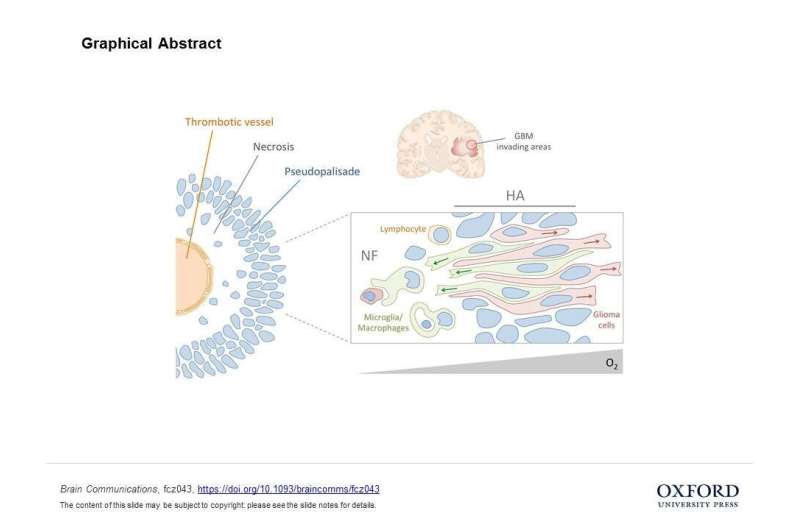Credit: Brain Communications
In a study published in Brain Communications, the team led by Carlos Barcia, researcher at Institut de Neurociències of the Universitat Autònoma de Barcelona (INc), analysed the role of immune cells in the expansion of glioblastoma, the most aggressive brain tumour type. The study is a collaborative effort with the General Hospital in Valencia, and part of Elena Saavedra's doctoral thesis.
The research shows for the first time that microglia and macrophages, cells of the immune system, facilitate the invasive capacity of glioblastoma by clearing the necrotic areas of the tumour while ignoring tumour cells in its niche of invasion.
This invasive niche, which is the part of the tumour that comes into contact with the healthy tissue, is shaped like a pseudopalisade and is poorly irrigated by blood vessels. This results in a lack of oxygen, hypoxia, which causes the tumour cells to escape and invade healthy tissue, while creating a necrotic area inside the tumour. Researchers show in this study that microglia and macrophages travel to these hypoxic areas and only clean dying tumour cells, facilitating tumour growth and expansion.
"The importance of this work is that we observed for the first time the presence of immune system cells in these particular tumour's invasive areas, and also that the phagocytic capacity of immune cells is not lost, and could be trained to facilitate the removal of tumour instead of helping its growth," says Carlos Barcia.
The next step is to study how microglia cells and macrophages could be trained through immunotherapy or other strategies to contribute to cancer elimination instead of facilitating its growth.
More information: Elena Saavedra-López et al. Phagocytic glioblastoma-associated microglia and macrophages populate invading pseudopalisades, Brain Communications (2019). DOI: 10.1093/braincomms/fcz043
Provided by Autonomous University of Barcelona























